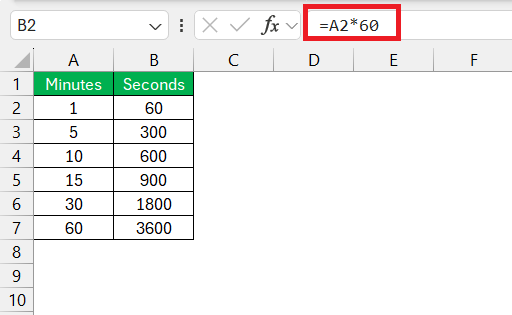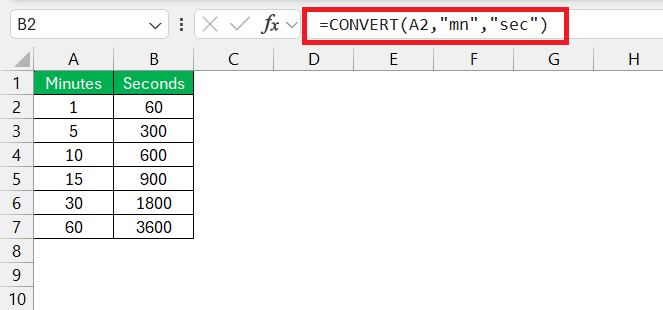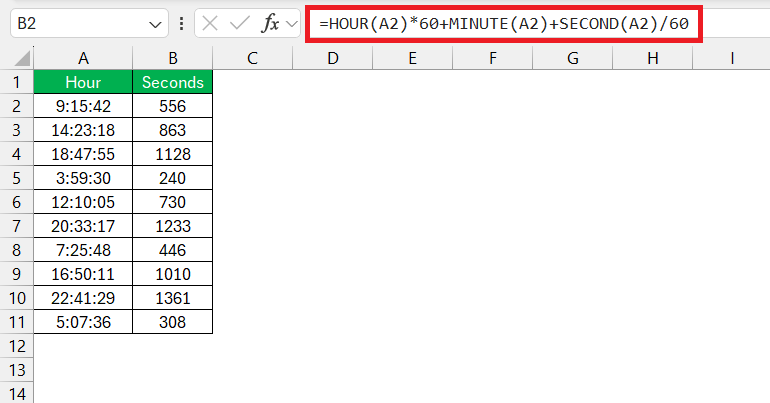Mastering time conversions in Microsoft Excel is a pivotal skill for anyone handling data analysis or project management tasks. With precision and clarity as the primary goals, understanding the various techniques and functions available can significantly enhance your efficiency and accuracy. Whether you’re converting between minutes and seconds, or tackling more complex transformations involving hours, minutes, and seconds, Excel offers a range of tools to streamline the process.
Key Takeaways:
- Understanding the Importance: Excel time conversions aren’t just about numbers; they’re about ensuring clarity and precision in your data analysis and reporting.
- Exploring Conversion Techniques: From simple multiplication for basic conversions to utilizing advanced functions like CONVERT, Excel provides a spectrum of tools to meet your needs.
- Harnessing Built-in Functions: Functions like HOUR, MINUTE, and SECOND empower you to dissect time values and manipulate them to fit your requirements accurately.
- Avoiding Pitfalls: Correct formatting and thorough formula verification are essential steps to prevent errors and ensure the accuracy of your time conversions.
Table of Contents
Introduction to Excel Time Conversions
The Importance of Converting Time Measurements in Excel
Getting the hang of converting time measurements in Excel can make a world of difference when you’re analyzing data. Understanding concepts like why and when you should flip seconds to minutes or vice versa helps in fine-tuning reports to your needs.
Whether you’re scheduling tasks, tracking event durations, or working on a detailed analysis, knowing how to switch between different units of time ensures that your data isn’t just precise—it’s clear and interpretable by anyone who reads it.
Overview of Time Conversion Techniques in Excel
Navigating through Excel’s time conversion techniques can feel like learning a new language, but once you get the gist of it, it becomes a game-changer. From using sleek formulas to applying built-in functions, there’s a whole toolkit at your disposal.
Simplify your work life by mastering methods that range from converting time values to minutes, to transforming text-formatted time, and even converting combined date and time into just minutes. With a little practice, working with time data can become a breeze, enhancing the efficiency of your spreadsheets.
Quick Methods to Convert Minutes to Seconds
Utilizing Simple Multiplication for Time Conversion
Wave goodbye to the panic of dealing with time conversion in Excel, because simple multiplication is here to the rescue. Grab your trusty multiplier of 60 to convert minutes to seconds and let it work its magic against the minute value. If Excel already counts a day as 1 and an hour as 1/24, minutes are just a hop away at 1/1440. The cherry on top?
When you multiply those minutes by 60, you unlock their secrets in seconds — poof! Just remember to check your cell formatting, or your result might be in for a cloak-and-dagger act!
Applying the CONVERT Function for Seamless Transitions
Are you ready to take your Excel skills to the next level? Behold the CONVERT function, your new sidekick for agile and error-free transitions between various units, including those pesky time conversions. Simply plug in the number to be converted, add the source unit, and the target unit, and watch the magic unfold.
Want to see 15 minutes turn into seconds? =CONVERT(15, “mn”, “sec”) does the trick without breaking a sweat.
The CONVERT function is your handy tool for ensuring quick and accurate shifts from one time unit to another, keeping your spreadsheets cruising along smoothly.
Harnessing Excel Functions: HOUR, MINUTE, and SECOND
It’s time to pull back the curtain on Excel’s time-centric functions! With HOUR, MINUTE, and SECOND at the ready, you’ll soon become a maestro of precise time manipulation. Use these functions to pluck out each component of a time value, and then, with a sprinkle of arithmetic, transform it into your desired format. Need your time in pure minutes?
Cast =HOUR(A2)*60 + MINUTE(A2) + SECOND(A2)/60 onto your cell, and like a well-crafted spell, your time emerges in minutes.
It’s this interplay of functions that streamlines complex time conversions into a straightforward, foolproof process.
Tips to Avoid Common Pitfalls in Excel Time Conversions
Checking for Correct Formatting Before Conversions
Before you go all in with time conversions, remember that the devil is in the details — or in this case, the format. Make sure your time cells are dressed for success in a format that Excel recognizes, or you’re in for a world of confusion. If the stage isn’t set right, formulas meant to convert time will flunk big time.
Check twice or even thrice to ensure the cells are formatted as ‘Time’ and not as plain ol’ text or General. This one simple check can save you from a tumble down the rabbit hole of conversion errors.
Ensuring Accuracy with Time Functions and Formulas
Nothing beats that moment of triumph when your Excel time calculations are spot-on. To ensure you get that feeling every time, give your formulas a thorough vetting. Use the infamous “Calculate Now” button to force Excel to reveal the results of your time functions and formulas, verifying their accuracy.
This important step is like the grand finale of a magic trick — it confirms that your sheet is free from sneaky conversion errors and is delivering the precise time in seconds as promised. Remember, trust but verify when it comes to Excel’s time wizardry.
FAQs on Converting Minutes to Seconds in Excel
What is the formula for minutes to seconds?
To convert minutes to seconds in Excel, simply multiply the number of minutes by 60. The formula is =A1*60 if cell A1 contains the number of minutes you’re converting. Quick, easy, and straight to the point!
How do I convert a column of minutes into seconds in Excel?
To convert an entire column of minutes into seconds in Excel, enter =A1*60 in the first cell next to your minutes column, then drag the fill handle down. This copies the formula to the rest of the cells, converting all your minutes to seconds in a snap.
Can I convert multiple time formats at once using Excel functions?
Yes, you can convert multiple time formats at once in Excel by using a combination of time functions and the ‘Paste Special’ feature to apply a conversion factor across a range of cells with different time formats. This saves you from converting each cell individually—now that’s a real-time-saver!
How to convert hh mm ss into seconds in Excel?
To convert time in the format hh:mm:ss into seconds in Excel, use the formula =(HOUR(A1)*3600)+(MINUTE(A1)*60)+SECOND(A1), where A1 is the cell with the time format you want to convert. This extracts hours, minutes, and seconds, converting them all into seconds.
What are the limitations of converting time to seconds in Excel?
Converting time to seconds in Excel has its limits. The standard hh:mm:ss format can only represent up to 24 hours, so anything beyond that needs a different approach. Also, Excel can’t directly handle milliseconds or microseconds in time conversions—those require a bit of Excel gymnastics or alternative software solutions to manage. Always remember to format your times correctly to avoid formula flubs!
John Michaloudis is a former accountant and finance analyst at General Electric, a Microsoft MVP since 2020, an Amazon #1 bestselling author of 4 Microsoft Excel books and teacher of Microsoft Excel & Office over at his flagship MyExcelOnline Academy Online Course.











